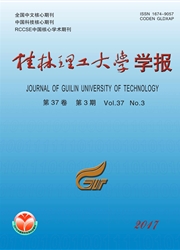

 中文摘要:
中文摘要:
星载原子钟在空间环境中受到多种不确定因素的影响以及原子钟本身所具有的复杂特性,导致卫星钟差呈现出非线性和非平稳性变化。为此提出了一种新方法:先采用小波分解将原始钟差序列分解成高频分量和低频分量,然后利用遗传小波神经网络对低频分量和高频分量分别进行预报,最后将各分量的预报结果进行叠加得到最终的预报值,并与灰色模型、最小二乘支持向量机和遗传小波神经网络的预报结果对比分析。结果表明:该方法预报精度较高,预报残差更为平稳,应用于卫星钟差预报是可行有效的。
 英文摘要:
英文摘要:
Because of many uncertain factors in the space environment and influenced by the complex features of on-board atomic clock, satellite clock bias presents nonlinear and non-stationary. According to this question, this paper proposes a new method. First, this method uses wavelet decomposition to decompose the original SCB series into high frequency and low frequency components, and with the genetic wavelet neural network to predict low frequency and high frequency components respectively. Finally, the final prediction value of SCB is yielded by the linearity superposition for the respective prediction results. In comparison and analysis with the prediction results of gray model, the least squares support vector machine and genetic wavelet neural network. The test results show that the prediction accuracy of the new method is high and forecast residual is relatively more stable, and accordingly it can be used for SCB prediction.
 同期刊论文项目
同期刊论文项目
 同项目期刊论文
同项目期刊论文
 期刊信息
期刊信息
